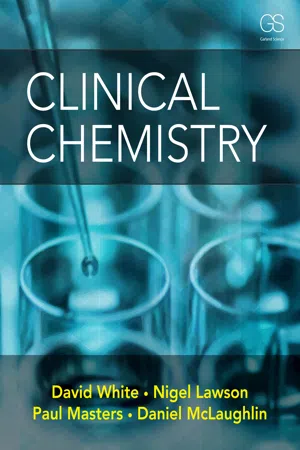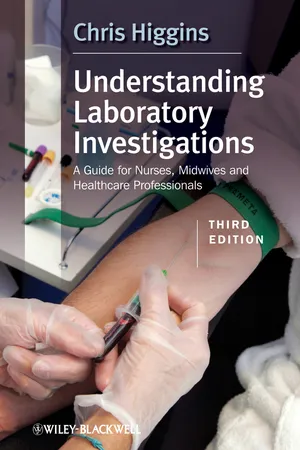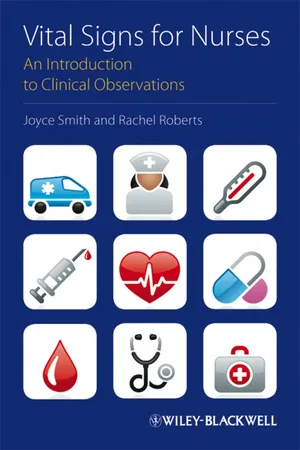Biological Sciences
Control of Blood Glucose Concentration
The control of blood glucose concentration involves the regulation of glucose levels in the bloodstream to maintain homeostasis. This process is primarily managed by the hormones insulin and glucagon, which are produced by the pancreas. Insulin lowers blood glucose levels by promoting the uptake of glucose by cells, while glucagon raises blood glucose levels by stimulating the release of glucose from the liver.
Written by Perlego with AI-assistance
Related key terms
7 Key excerpts on "Control of Blood Glucose Concentration"
- eBook - ePub
- David White, Nigel Lawson, Paul Masters, Daniel McLaughlin(Authors)
- 2016(Publication Date)
- Garland Science(Publisher)
CHAPTER2
GLUCOSE
IN THIS CHAPTER HORMONAL REGULATION OF BLOOD GLUCOSE CONCENTRATION GLUCOSE STORAGE AND METABOLISM INSULIN GLUCAGON MAINTENANCE OF GLUCOSE HOMEOSTASIS IN THE FED AND FASTING STATES GLYCATION OF PROTEINS HYPERGLYCEMIA AND DIABETES MELLITUS CLINICAL CHEMISTRY MARKERS OF GLYCEMIC CONTROL HYPOGLYCEMIA METABOLISM OF FRUCTOSE AND GALACTOSE INBORN ERRORS OF CARBOHYDRATE METABOLISMGlucose is the single common substrate that can be used by all tissues as an energy source. Although most tissues can also use fatty acids for energy, nervous tissue, red cells (erythrocytes), kidney, and, in normal circumstances, brain have an obligatory requirement for glucose (Table 2.1 ). It is for this reason that the maintenance of plasma glucose within a narrow concentration range (Table 2.2 ) is fundamental to health. The normal distribution range of blood glucose in the UK population is 4.1–5.9 mmol/L (74–106 mg/dL) with a slightly higher range for adults of 60 years and above of 4.4–6.4 mmol/L (80–115 mg/dL). Pathological consequences ensue when the glucose concentration lies outside of this range for prolonged periods; hypoglycemia is characterized by impaired mental function and severe hypoglycemia by coma, while hyperglycemia, particularly chronic hyperglycemia, promotes the insidious pathology of diabetes mellitus.TABLE 2.1 Major fuel sources consumed by tissues after a mealTABLE 2.2 Normal ranges for glucose, HbA1c, and associated parameters2.1 HORMONAL REGULATION OF BLOOD GLUCOSE CONCENTRATION
Blood glucose concentration is maintained within the normal range (homeostasis) by the opposing actions of anabolic hormones, mainly insulin, which promote the removal of glucose from the circulation, and catabolic hormones, mainly glucagon and, in times of stress, also epinephrine, growth hormone, and cortisol, which promote the input of glucose into blood. For the most part, glucose homeostasis can be thought of as a balance between the actions of insulin and glucagon (insulin–glucagon ratio; Table 2.3 - eBook - ePub
Understanding Laboratory Investigations
A Guide for Nurses, Midwives and Health Professionals
- Chris Higgins(Author)
- 2012(Publication Date)
- Wiley-Blackwell(Publisher)
Immediately after a meal blood glucose concentration rises as glucose derived from food is absorbed from the gut. The cells of the body take up this glucose; some is utilised to satisfy current energy requirement and any excess is stored as glycogen in liver and muscle cells, or as fat (triglyceride) in adipose tissue. As a consequence of this movement of glucose from blood to cells, blood glucose concentration falls between meals. However in order to maintain minimum blood glucose concentration between meals, glucose is mobilised from hepatic glycogen stores. If necessary glucose may also be manufactured within cells from non-carbohydrate sources such as protein, by a process called gluconeogenesis.Both the uptake of glucose from blood by cells and the metabolic pathways involved in blood glucose regulation (glycogenesis, glycogenolysis etc.) are under the overall control of hormones, the secretion of which are governed in turn by blood glucose concentration.
The pancreatic hormones insulin and glucagon are the most important for regulating blood glucose levels. Insulin has the effect of reducing blood glucose levels by:Hormonal Control of Blood Glucose Concentration- Promoting uptake of glucose by cells from blood (the uptake of glucose by cells of the liver and central nervous system is independent of insulin).
- Promoting the cellular metabolism (oxidation) of glucose to pyruvate (glycolysis).
- Increasing formation of glycogen from glucose in liver and muscle (glycogenesis).
- Increasing formation of triglyceride from glucose in adipose cells (lipogenesis).
- Inhibiting production of glucose from non-carbohydrate sources (gluconeogenesis).
Insulin is synthesised in, and secreted by the beta (β) cells of the pancreas in response to rising blood glucose concentration, and operates by binding to insulin receptors present on the surface of insulin sensitive cells. The normal hormonal response to rising blood glucose depends then on: - eBook - ePub
Vital Signs for Nurses
An Introduction to Clinical Observations
- Joyce Smith, Rachel Roberts(Authors)
- 2011(Publication Date)
- Wiley-Blackwell(Publisher)
Chapter 11 Blood Glucose Monitoring Introduction Blood glucose monitoring is an important part of the patient's vital signs and is central to the assessment process. Glucose is required by the body to maintain the body's metabolism, and any deviation from the normal range may result in an altered level of consciousness in the patient. Obtaining a sample of blood from the patient is the first step towards measuring the glucose levels within the body. Learning Outcomes By the end of this chapter, you will be able to discuss the following: The anatomy and physiology related to blood glucose Stress response Abnormal/normal blood glucose readings Diabetes How to perform equipments checks/quality control test How to obtain a capillary blood sample Cleaning and storage of the glucose monitor Documentation Policies and guidelines Anatomy and Physiology The two major glands within our body that are involved in maintaining blood glucose levels are the liver and the pancreas. The liver is the largest gland in the body and the portal vein enters the liver, carrying blood from the stomach and pancreas. The pancreas is a pale grey gland that is about 12–15 cm long and lies behind the stomach (Waugh and Grant, 2006). Within the gland are specialised cells that are called the Islets of Langerhans that produce the hormones insulin and glucagon. The beta cells secrete insulin to promote carbohydrate metabolism and the alpha cells secrete glucagon that stimulates glycogenolysis in the liver (Watkins et al., 2003). Both hormones are stimulated by fluctuating blood glucose levels that flow directly into the blood stream. These two hormones work together to regulate blood glucose levels, ensuring that they are maintained within the normal range of 4–7 mmol/l (Ferguson, 2005). For our brain to function effectively, it needs both oxygen and glucose - eBook - ePub
Molecular Endocrinology
Genetic Analysis of Hormones and their Receptors
- Gill Rumsby, Dr Sheelagh Farrow(Authors)
- 2020(Publication Date)
- Garland Science(Publisher)
5 Molecular insights into mechanisms regulating glucose homeostasis Peter R. Shepherd 5.1 Introduction Many tissues of the body such as the brain and blood cells have an absolute requirement for glucose as an energy source such that if blood glucose levels fall below 3 mM the functioning of these tissues is severely impaired. Conversely, prolonged elevation of blood glucose levels also has major deleterious effects on many tissues. Therefore a system of counterbalancing hormones has evolved to ensure that blood glucose levels are maintained at around 5 mM. The major hormonal regulators of glucose homeostasis are glucagon and insulin. In the absorptive state following a meal, glucose is rapidly absorbed into the blood creating a need to lower blood glucose levels and to store some of the glucose for later use. As blood glucose rises above about 5 mM, a glucose-sensing mechanism in the β cells of the endocrine pancreas causes secretion of insulin into the portal vein. The secreted insulin acts on liver, muscle and fat to rapidly decrease hepatic glucose output and to promote glucose uptake and storage in all three tissues. Following binding to target tissue, insulin is rapidly degraded and blood glucose and insulin levels both fall. The lower blood glucose level results in lower insulin secretion and hence 3-4 h after a meal the concentration of insulin in the blood returns to fasting levels. As the glucose bolus from the meal is absorbed the body must switch to other sources to maintain adequate blood glucose levels. The falling blood glucose concentration stimulates glucagon secretion from the a cells of the pancreas. In the liver the combination of low insulin and increased glucagon act to increase gluconeogenesis and breakdown of liver glycogen stores - eBook - ePub
General and Molecular Pharmacology
Principles of Drug Action
- Francesco Clementi, Guido Fumagalli(Authors)
- 2015(Publication Date)
- Wiley(Publisher)
Glucose is an energetic substrate that plays an essential role, especially in those tissues that are vital for the functioning of whole organism, such as the nervous system, red blood cells, and leukocytes. The key metabolic role of glucose derives from its ability to supply energy rapidly and, under certain conditions, even in the absence of oxygen. Both these properties make glucose unique as a metabolic substrate, even though it produces less energy per molecule than other substrates, and it can be stored (as glycogen) only in limited amounts. It is noteworthy that there is a hierarchy in glucose utilization in the body. In vital tissues, glucose uptake is not subject to hormonal regulation and depends exclusively on blood levels, whereas in other tissues, such as muscle and adipose tissues, glucose uptake is finely regulated by specific hormones. These characteristics may explain why there is a tight physiological control of blood glucose levels.MECHANISMS OF GLYCEMIC CONTROL
Glycemia is finely regulated, and many factors contribute to maintain it constant throughout the day, thus ensuring a continuous glucose supply to the brain and other vital tissues. Insulin plays a central role in this regulation, and its secretion is mainly controlled by blood glucose levels via feedback mechanisms. Insulin secretion increases when blood glucose level increases, and it decreases when blood glucose level decreases even modestly. The hypoglycemic action of insulin is counteracted by several hyperglycemic hormones, generally defined counterregulatory hormones: adrenaline, glucagon, cortisol, and growth hormone (GH). Both counterregulatory hormones and insulin control many other biological actions besides glycemia, often showing opposite effects. The ventromedial nucleus of the hypothalamus is regarded as the main area controlling the response to hypoglycemia, although other areas of the central nervous system are probably involved.The hypoglycemic effect of insulin results from the simultaneous stimulation of glucose uptake in insulin-dependent tissues, mainly muscles, and inhibition of glucose production, mainly in the liver. Under insulin stimulation, glucose can be immediately taken up by cells either to supply energy or to be stored as glycogen. Other fundamental metabolic actions of insulin are inhibition of lipolysis and ketogenesis and regulation of protein metabolism. - eBook - ePub
- Rudy Bilous, Richard Donnelly(Authors)
- 2010(Publication Date)
- Wiley-Blackwell(Publisher)
Part 2: Metabolic control and complications Chapter 9 Diabetes control and its measurement‘Diabetic control’ defines the extent to which the metabolism in the person with diabetes differs from that in the person without diabetes. Measurement usually focuses on blood glucose: ‘good’ control implies maintenance of near-normal blood glucose concentrations throughout the day. However, many other metabolites are disordered in diabetes and some, such as ketone bodies, are now more easily measurable and clinically useful, particularly during acute illness or periods of poor blood glucose control (Figure 9.1 ).Figure 9.1 Variations in plasma glucose concentrations over 2 days in a person without diabetes, a patient with type 1 diabetes (wide swings in glucose levels with little day-to-day consistency) and a patient with type 2 diabetes (similar profile to a subject without diabetes, but at a higher level and with greater postprandial peaks; fairly consistent from day to day).From Pickup & Williams. Textbook of Diabetes , 3rd edition. Blackwell Publishing Ltd, 2003.In addition to blood and urine glucose concentrations, there are indicators of longer term glycaemic control over the preceding weeks using plasma glycated haemoglobin (HbA1c ) or fructosamine concentrations (Table 9.1 ).Table 9.1 Indicators of glycaemic controlIndicator Main clinical use Urine glucose Poor index of BG, useful for surveillance in stable non-insulin treated type 2 diabetes Blood glucose • Fasting Correlates with mean daily BG and HbA1c in type 2 diabetes • Diurnal/circadian profiles Self-monitoring of BG, hospital assessment Glycated haemoglobin Glycaemic control (mean) over preceding 1–3 months Glycated serum protein, e.g. fructosamine - eBook - ePub
Care of People with Diabetes
A Manual for Healthcare Practice
- Trisha Dunning, Alan J. Sinclair(Authors)
- 2020(Publication Date)
- Wiley-Blackwell(Publisher)
The brain requires 120–140 g glucose per day to function normally and has limited capacity to manufacture its own glucose. Therefore, it depends on adequate levels of circulating blood glucose. A major function of glucose homeostasis is to ensure the brain receives sufficient glucose, which is its main source of energy. Glucose homeostasis depends on tight regulation of glucose use by liver, muscle, white and brown fat, and glucose production, and release into the bloodstream by the liver (Thorens 2011). In addition to the hormones described in Table 6.2, glucose homeostasis is controlled by the autonomic nervous system through glucose‐excited neurons (activated) or glucose‐inhibited neurons (inhibited). Most of these neurons are located in the brainstem and hypothalamus. They are activated by hyper‐ and hypoglycaemia. The loss of glucose sensing by these neurons as well as diminished beta cell responses are a feature of type 2 diabetes. The effects on the counter‐regulatory response could be due to initial defects in these glucose sensing neurons (Thorens 2011). Causes of hypoglycaemia Although hypoglycaemia is associated with insulin and GLM use, the relationship among these agents and food intake, exercise, and a range of other contributory factors is not straightforward. Some episodes can be explained by altered awareness or mismatch between food intake and/or food absorption and insulin
Learn about this page
Index pages curate the most relevant extracts from our library of academic textbooks. They’ve been created using an in-house natural language model (NLM), each adding context and meaning to key research topics.






